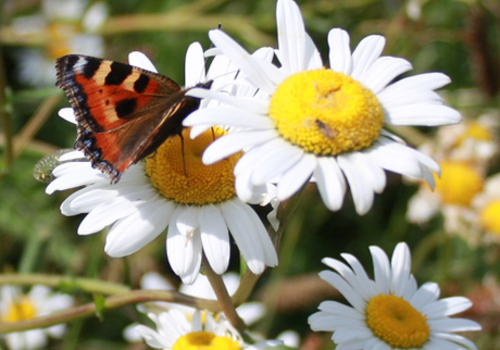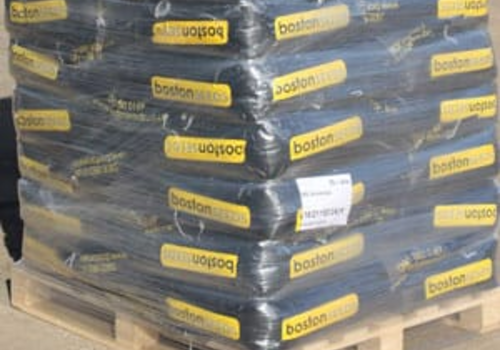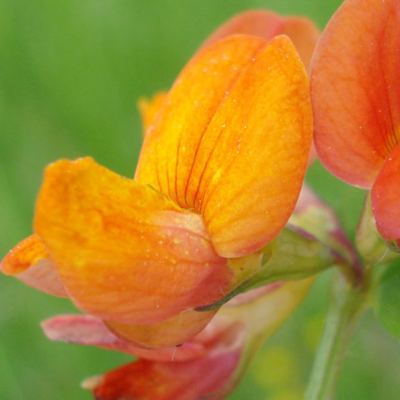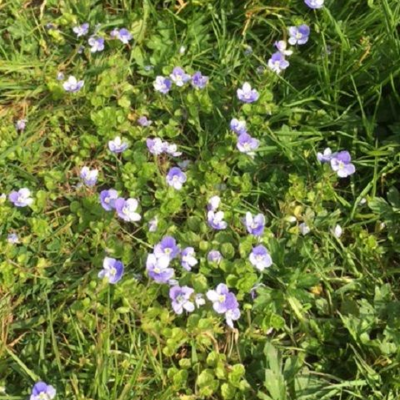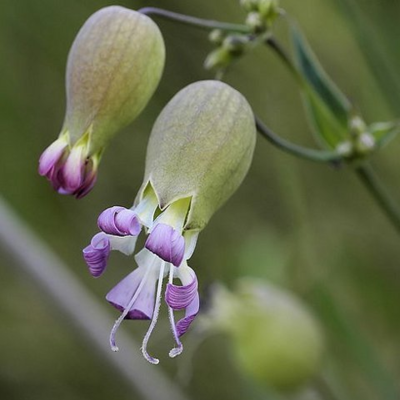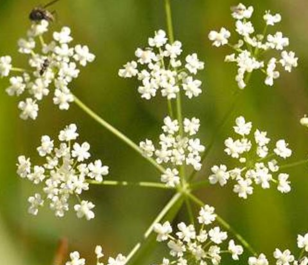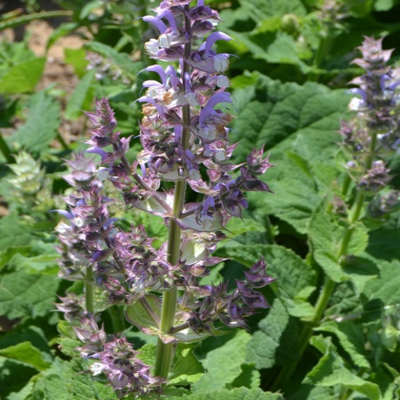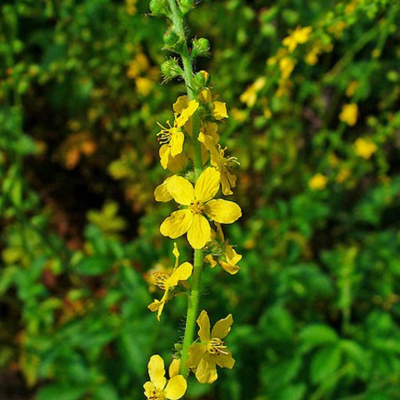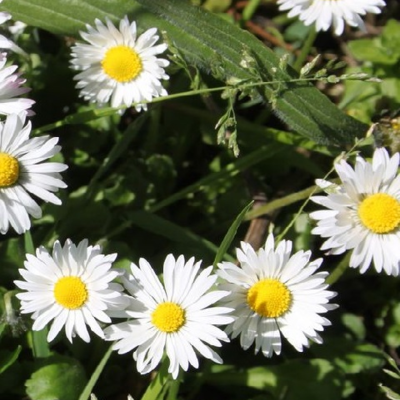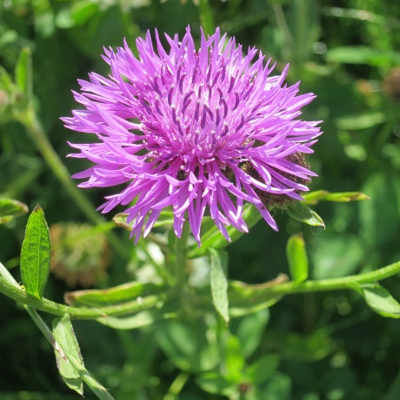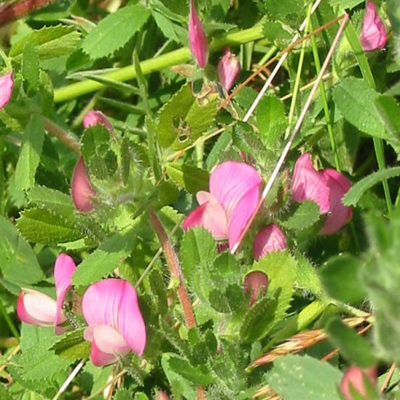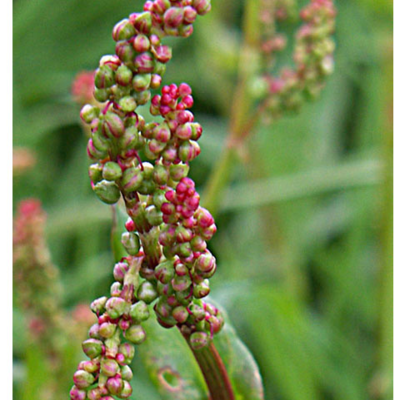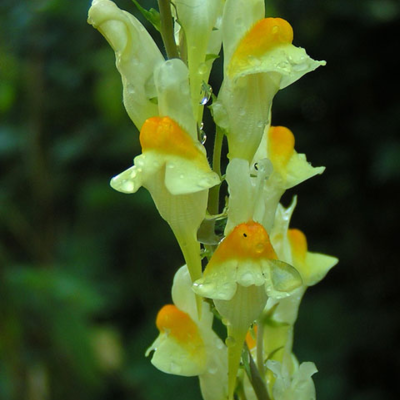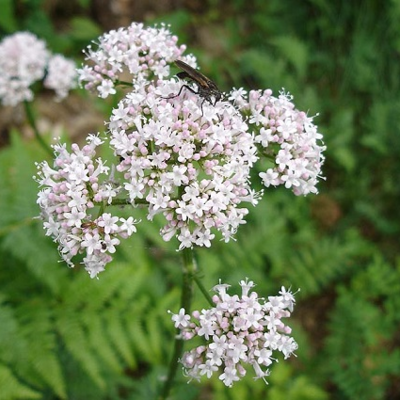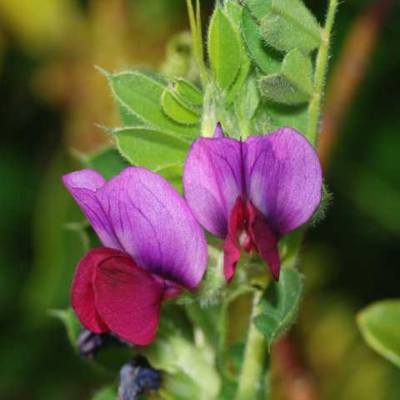Wildflower Plants A to Z
Choose from our entire range of over 100 wildflower plug plants, expertly grown in our very own nursery from high quality, UK native wildflower seed. Our wildflower plugs are ready to be planted straight out into your garden or meadow as soon as they arrive, all year round. Buying individual wildflower plants is one of the best ways to establish your chosen wildflower species, planted individually or as part of a more diverse meadow created from our range of wildflower seeds.
Don't hesitate to get in touch to speak to one of our experts or request a catalogue to view our full range. Ordering regularly or looking for large volumes? Click here to apply for a trade account today - we review all applications within one working day.
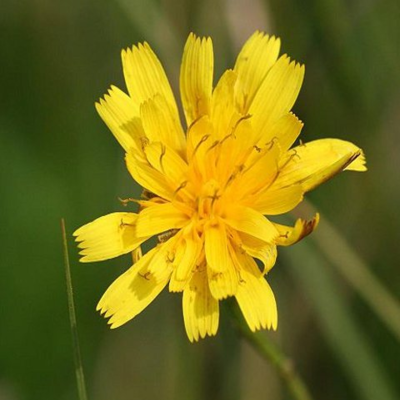

Plants for Pollinators highlights plants selected by the RHS as scientifically proven to tackle the declines in bees, butterflies and other pollinators.
In the autumnal gloom, spread some extra sunshine in a marshy environment with these dandelion-like rosettes of glinting gold. Not only is the Autumn Hawkbit long-lived, robust and especially attractive to pollinators, its seeds are also attractive to finches!
- Type: Perennial
- Height: 15-50cm.
- Flowers: July-September
- Soil Requirement: Moist
- Light Requirement: Full sun or partial shade
- Natural Habitat: Grasslands, rocky ridges, pathways.
- Also known as: Fall Dandelion
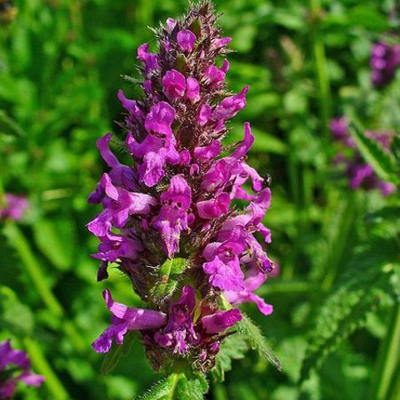

Plants for Pollinators highlights plants selected by the RHS as scientifically proven to tackle the declines in bees, butterflies and other pollinators.
Betony flowers bloom in spikes of rich wine red and purple, alongside distinct and attractive foliage. Its flowers are also known to attract bees and butterflies and they used to be planted in churchyards for spiritual protection. They grow well in any light, with an affinity for damp soil.
- Type: Perennial
- Height: 30-60cm.
- Flowers: June-August
- Soil Requirement: Moist but well-drained
- Light Requirement: Full sun or partial shade
- Natural Habitat: Grassy meadows, river banks
- Also known as: Bishops’s Wort, Wood Betony, Common Hedgenettle

Plants for Pollinators highlights plants selected by the RHS as scientifically proven to tackle the declines in bees, butterflies and other pollinators.
These yellow-and-orange clusters of pea-like flowers bring some fanciful flowers to your garden, but in a more down-to-earth way: hardy and low-growing, this meadow plant is an important source of nectar to certain pollinators, and its warm colouration adds a distinct summertime shine to lawns and wild gardens.
- Type: Perennial
- Height: 15-20cm.
- Flowers: May-October
- Soil Requirement: Well-drained
- Light Requirement: Full sun
- Natural Habitat: Meadows, roadsides, grasslands
- Also known as: Eggs and Bacon, Cheesecake Grass, Lamb’s Toes
A low-growing, creeping beauty that thrives at woodland edges, but also makes for a unique lawn subject- not many other common flowers can compare to these small spikes of azure petals shining in the sun and bringing a little of the blue sky’s beauty down to earth for your garden!
- Type: Perennial
- Height: 10-20cm.
- Flowers: April-July
- Soil Requirement: Moist but well-drained
- Light Requirement: Full sun or partial shade
- Natural Habitat: Roadsides, woodland, grassland
- Also known as: Angels’ Eyes, Blue Stars

Plants for Pollinators highlights plants selected by the RHS as scientifically proven to tackle the declines in bees, butterflies and other pollinators.
An unusual yet distinct variant of campion, which has grey-tinted foliage and grows drooping, fresh white bladders veined with purple, and five-petalled flowers. A plant with a subtle, withdrawn beauty that also attracts bees and butterflies.
- Type: Perennial
- Height: 20–60cm.
- Flowers: June-August
- Soil Requirement: Well-drained
- Light Requirement: Full sun
- Natural Habitat: Meadows, open forests, hedgerows
- Also known as: Cowbell, Maiden’s Tears
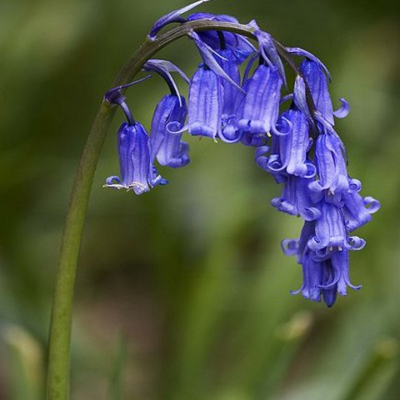

Plants for Pollinators highlights plants selected by the RHS as scientifically proven to tackle the declines in bees, butterflies and other pollinators.
What else is there to say about the dainty azure arcs of the beloved Bluebell? Though they take several years to develop from seed, fully grown bluebells naturalise quickly and can multiply over time, leaving your garden awash and aglow with the famous fairy-tale flora! In addition, Bluebells can rarely grow in pink and white.
- Type: Perennial
- Height: 30–60cm.
- Flowers: April-June
- Soil Requirement: Well-drained
- Light Requirement: Partial shade
- Natural Habitat: Woodlands, hedge banks
- Also known as: Bell Bottle, Cuckoo’s Boots, Witch’s Thimbles
This item is currently unavailable
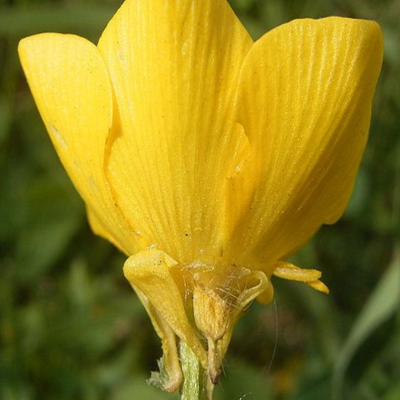

Plants for Pollinators highlights plants selected by the RHS as scientifically proven to tackle the declines in bees, butterflies and other pollinators.
So-named for their swollen underground stem, the bulbous buttercup is a more widespread variant of the iconic glossy-yellow springtime wildflower. Thrives in acidic soil, with good sunlight to best bring out its golden glow.
- Type: Perennial
- Height: 30–45cm.
- Flowers: March-June
- Soil Requirement: Well-drained
- Light Requirement: Full sun
- Natural Habitat: Meadows, grasslands, road verges
- Also known as: Frogs-Foot, Goldcup
For those looking for something truly unique, the Burnet Saxifrage is one in a million: bearing thin branches of miniature, crystal-white floral umbels like snowflakes, as well as highly variable foliage, ranging from thin and sharp to short and toothed. It’s easy to naturalise, and its simple colouration makes it a suitable addition to any arrangement.
- Type: Perennial
- Height: 50–100cm.
- Flowers: May-September
- Soil Requirement: Moist but well-drained
- Light Requirement: Sun or partial shade
- Natural Habitat: Grassland, heathland
- Also known as: Lesser Burnet
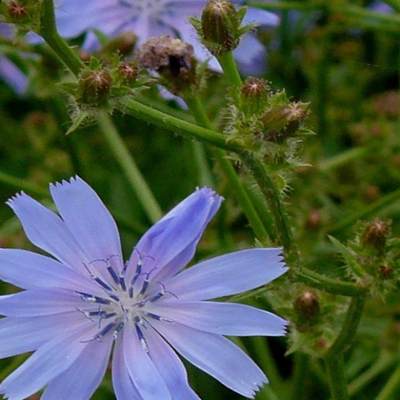

Plants for Pollinators highlights plants selected by the RHS as scientifically proven to tackle the declines in bees, butterflies and other pollinators.
The Chicory is a perfect mix of energetic colour and grace, producing feathery, sky blue petals on thin, branching stems. In addition to making a creative climber, the Chicory’s roots have also seen a wide range of culinary uses, especially as an alternative to coffee - but we think the beauty of its bold blooms are enough of a boost!
- Type: Perennial
- Height: 30–90cm.
- Flowers: June-October
- Soil Requirement: Well-drained
- Light Requirement: Full sun
- Natural Habitat: Fields, road verges
- Also known as: Blue Dandelion, French Endive, Succory
The lilac-pink bracts of the Clary Sage certainly are a sight for sore eyes! Not only that, but its heart-shaped foliage is famously aromatic to the point where it’s frequently used in aromatherapy, along other medicinal uses the herb’s seen throughout the years.
- Type: Biennial
- Height: 60-100cm.
- Flowers: March-September
- Soil Requirement: Well-drained
- Light Requirement: Full sun
- Natural Habitat: Grassland, coastal areas
- Also known as: Clear-Eye, See-Bright
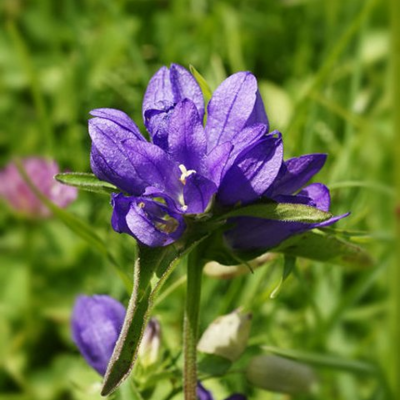

Plants for Pollinators highlights plants selected by the RHS as scientifically proven to tackle the declines in bees, butterflies and other pollinators.
As its name suggests, the Clustered Bellflower sprouts dense bursts of vivid violet-blue flowers. Each flower is its own brilliant bouquet, on top of being hardy and attractive to bees and butterflies!
- Type: Perennial
- Height: 30–75cm.
- Flowers: June-September
- Soil Requirement: Well-drained, chalky
- Light Requirement: Partial shade
- Natural Habitat: Grasslands, coastal cliffs
- Also known as: Dane’s Blood
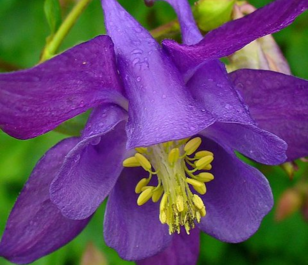

Plants for Pollinators highlights plants selected by the RHS as scientifically proven to tackle the declines in bees, butterflies and other pollinators.
The beautiful, nodding, bell-shaped blooms of the Columbine flower come in a variety of colours, even bi-coloured, though the most common colour in the wild is a vivid blue-violet, contrasted by a shining stamen the colour of honey, which is attractive to bees and butterflies. A cute cottage classic, perfect for pots, beds and borders, as it’s easy to grow and naturalise, though it dislikes being too dry.
- Type: Perennial
- Height: 45–60cm
- Flowers: June-July
- Soil Requirement: Moist but well-drained
- Light Requirement: Full sun or partial shade
- Natural Habitat: Woodlands, roadsides, grasslands
- Also known as: Dove Plant, Lady’s Shoes, Pigeon Foot

Plants for Pollinators highlights plants selected by the RHS as scientifically proven to tackle the declines in bees, butterflies and other pollinators.
Common Agrimony is an attractive, medium height meadow plant, consising of tall spires of star-shaped, sunny yellow flowers. An wildlife-friendly flower, it's attractive to pollinators as well as wild birds.
- Type: Perennial
- Height: 40-80cm
- Flowers: June to September
- Soil requirement: Neutral, well-drained
- Light requirement: Full sun or partial shade
- Natural habitat: Southern UK, grassland, meadows, roadsides
- Also known as: Church Steeples, Sticklewort, Aaron's Rod, Clot-Bur, Fairy's Wand, Money-In-Both-Pockets, Salt-And-Pepper, Sweethearts
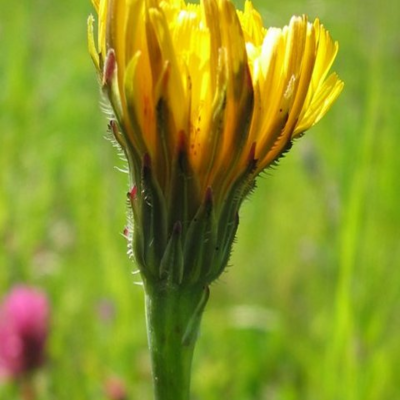

Plants for Pollinators highlights plants selected by the RHS as scientifically proven to tackle the declines in bees, butterflies and other pollinators.
The Common Cat's-Ear is a must-have for meadows, providing a scattering of sunny yellow blooms which return year after year, all while attracting pollinators and being relatively easy to take care of- they simply are the cat's pajamas!
- Type: Perennial
- Height: 30-45cm.
- Flowers: May-September
- Soil Requirement: Well-drained
- Light Requirement: Full sun or part shade
- Natural Habitat: Roadsides, grasslands
- Also known as: Flatweed, False Dandelion

Plants for Pollinators highlights plants selected by the RHS as scientifically proven to tackle the declines in bees, butterflies and other pollinators.
Appearance-wise, the Common Daisy’s nothing crazy, with a ruffle of thin white petals, sometimes tinged pink, framing a central crown of tiny yellow florets. But love it or love it not, this famous flora is certainly robust, hardy and long-flowering, meaning its classic, cheery charm will shine in a lawn, bed or meadow for quite some time.
- Type: Perennial
- Height: 5–10cm.
- Flowers: All year
- Soil Requirement: Moist or well-drained
- Light Requirement: Full sun or partial shade
- Natural Habitat: Meadows, woodlands, road verges
- Also known as: Bone Flower, Goose Flower, Luckin Gowan
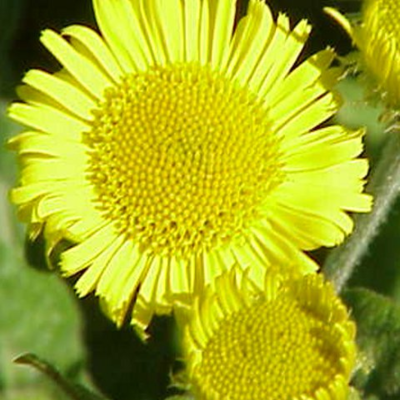

Plants for Pollinators highlights plants selected by the RHS as scientifically proven to tackle the declines in bees, butterflies and other pollinators.
If you're itching for a good pond-side plant, this may be what you need: these branches of bold yellow, daisy-like florets with ray-like petals are the most effective way to place some sunshine in a shady spot, but also has use in repelling invasive insects with its unique scent.
- Type: Perennial
- Height: 30-60cm.
- Flowers: July-September
- Soil Requirement: Moist
- Light Requirement: Full sun or partial shade
- Natural Habitat: Riversides, marshes, ditches
- Also known as: Harvest Flower, Job’s Tears, Pig-Daisy

Plants for Pollinators highlights plants selected by the RHS as scientifically proven to tackle the declines in bees, butterflies and other pollinators.
These thistle-like florets of magenta atop maroon flower heads are an excellent pick for any garden, despite their prickly appearance: Not only are they super hardy, they're vital in wild meadows for supporting weaker wildflowers, and they're also attractive to butterflies and bees!
- Type: Perennial
- Height: 30-60cm.
- Flowers: June-September
- Soil Requirement: Well-drained
- Light Requirement: Full sun or partial shade
- Natural Habitat: Grasslands, forest verges
- Also known as: Bell Weed, Hardhead, Tassel
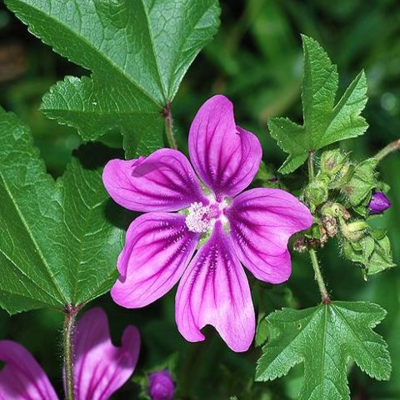

Plants for Pollinators highlights plants selected by the RHS as scientifically proven to tackle the declines in bees, butterflies and other pollinators.
There's many a reason to plant the tough, adaptable and hearty bloom that is mallow: cherish it for its heart-winning, heart-shaped pink petals veined with violet, or for its numerous medicinal and culinary uses; it's a flower that promises to please in many different environments.
- Type: Annual or Biennial
- Height: 30-90cm.
- Flowers: June-September
- Soil Requirement: Moist but well-drained
- Light Requirement: Full sun
- Natural Habitat: Meadows, road verges
- Also known as: Cheese Cakes, Marsh Mallow, Round Dock
A creeping perennial which produces pink and white, pea-like petals, with equally-appealing and hardy hairy foliage with toothed leaves. An ideal meadow plant which prefers sandy soil and blooms in late summer, which also attracts bees and butterflies.
- Type: Perennial
- Height: 30-60cm.
- Flowers: July-September
- Soil Requirement: Well-drained
- Light Requirement: Full sun
- Natural Habitat: Grassland, coastal areas
- Also known as: Cammock, Land Whin, Stay-Plough
This item is currently unavailable
These spikes of small, scarlet-and-fuschia flowers really spice up a wildmeadow: not only that, they bring in bees and self-seed with little fuss, making them the perfect plant to pepper in! Their attractive arrow-shapes leaves also taste tart when eaten.
- Type: Perennial
- Height: 15–60cm.
- Flowers: May-August
- Soil Requirement: Well-drained
- Light Requirement: Full sun
- Natural Habitat: Grasslands, woodlands, verges
- Also known as: Sour Ducks, Vinegar Plant
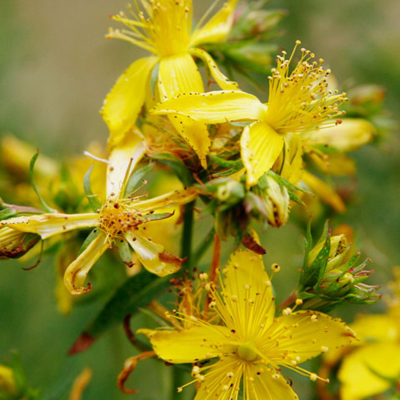

Plants for Pollinators highlights plants selected by the RHS as scientifically proven to tackle the declines in bees, butterflies and other pollinators.
Looking at its golden, star-shaped flowers and showoffish nectar-rich stamens which are perfect for pollinators, it's no wonder that St John's Wort is famously revered in a variety of religions and myths- even today it's highly valued in herbalism! A great plant to grow for a gorgeous golden glow.
- Type: Perennial
- Height: 30–60cm.
- Flowers: June-September
- Soil Requirement: Moist but well-drained
- Light Requirement: Full sun or partial shade
- Natural Habitat: River banks, meadows, hedgerows
- Also known as: Cammock, Devil’s Scourge, Rosin Rose

Plants for Pollinators highlights plants selected by the RHS as scientifically proven to tackle the declines in bees, butterflies and other pollinators.
Here’s the perfect plant for those who want a bright burst of colour lasting late into autumn! The Common Toadflax bears snapdragon-like flowers with pale, buttery outer petals and golden-orange centres; complimenting the palette of summer spirit as well as falling leaves.
- Type: Perennial
- Height: 30-60cm.
- Flowers: July-October
- Soil Requirement: Well-drained
- Light Requirement: Full sun or partial shade
- Natural Habitat: Hedgerows, meadows, waste ground
- Also known as: Bread And Butter, False Flax, Jacob’s Ladder
Standing proud on tall, grey-green stems, Common Valerian can grow up to an astonishing 1.5m with delicate white-pink flowers atop. It has also been known to be used as a medicinal herb to help promote sleep.
- Type: Perennial
- Height: 15-75cm.
- Flowers: June-August
- Soil Requirement: Damp
- Light Requirement: Full Sun, Light Shade
- Natural Habitat: Woodland clearings and ditches
- Also known as: Garden Valerian, White Valerian, Garden Heliotrope, Setwall and All-Heal

Plants for Pollinators highlights plants selected by the RHS as scientifically proven to tackle the declines in bees, butterflies and other pollinators.
These climbing woodland legumes have an earnest and delicate charm not seen in others of its kind: its small, two-tone, pea-like petals in rich pink and purple look a bit like butterflies, which may be why they're so attractive to pollinators.
- Type: Annual
- Height: 45–75cm.
- Flowers: June-September
- Soil Requirement: Well-drained
- Light Requirement: Full sun
- Natural Habitat: Grasslands, verges, coastal areas
- Also known as: Fetch, Lintels
This item is currently unavailable
Choosing different wildflower plants by species gives you complete control over when you plant them, where you plant them and what the end result will be. And buying wildflower plug plants instead of seeds, means that you don't have to wait for them to germinate - perfect if speed is of the essence!
The full range of over 100 British wildflower plants species from Boston Seeds is available to buy online in trays of 25, 150 and 500 plug plants and all are available with nationwide delivery.
Want to learn more about the likes and dislikes of your favourite wildflower plants? Our handy wildflower species quide will tell you all you need to know - yours to download and keep for FREE.
Buy With Confidence

